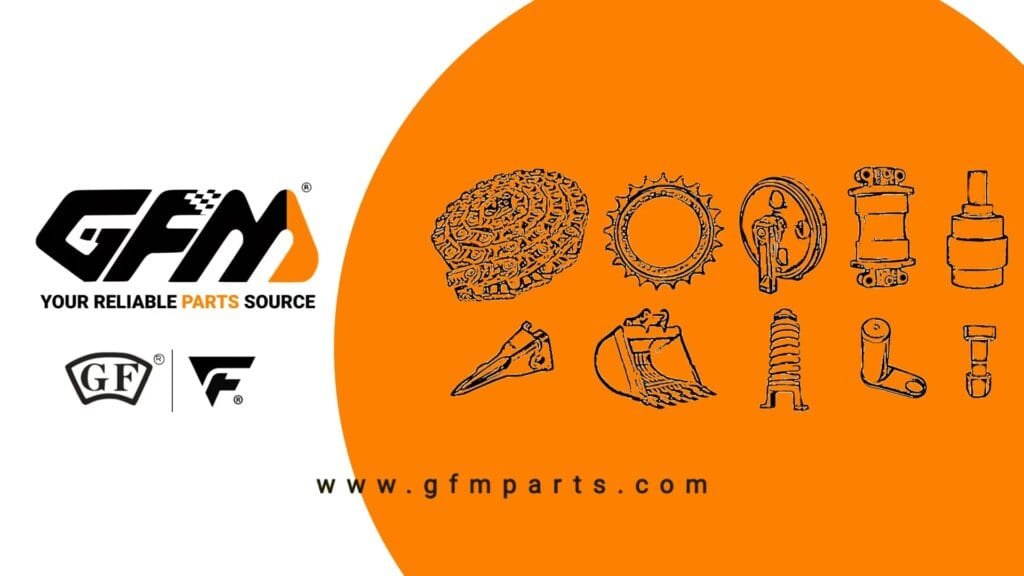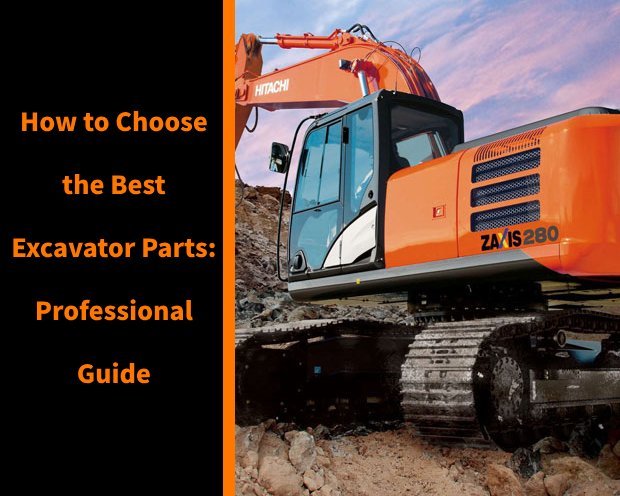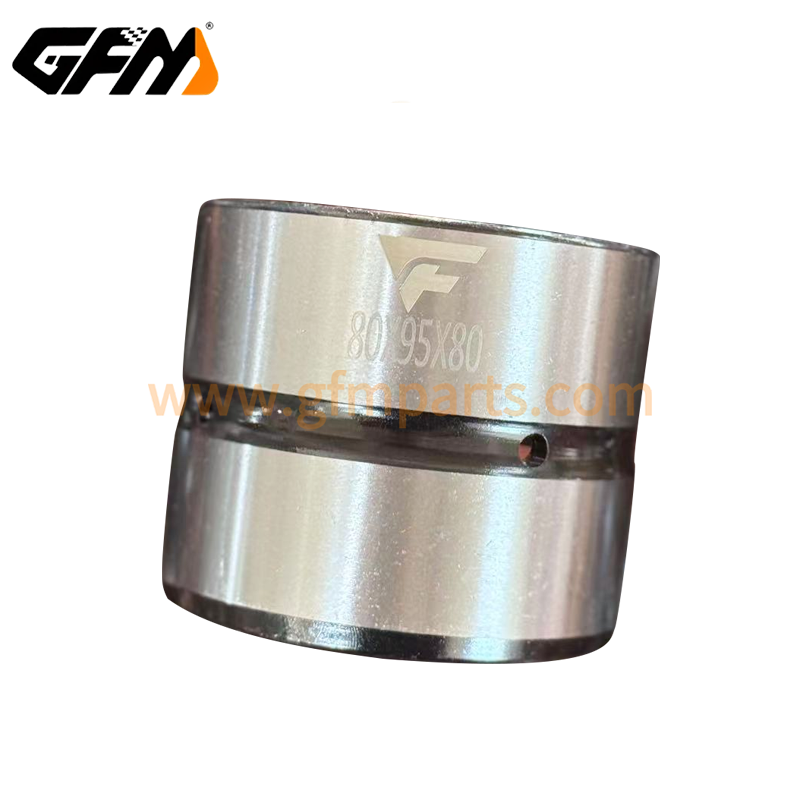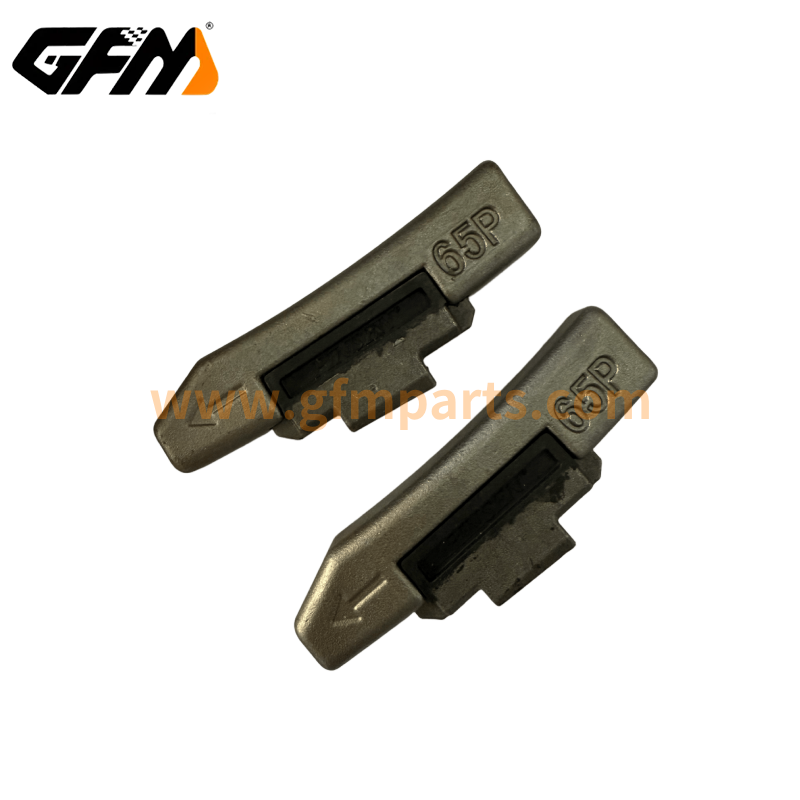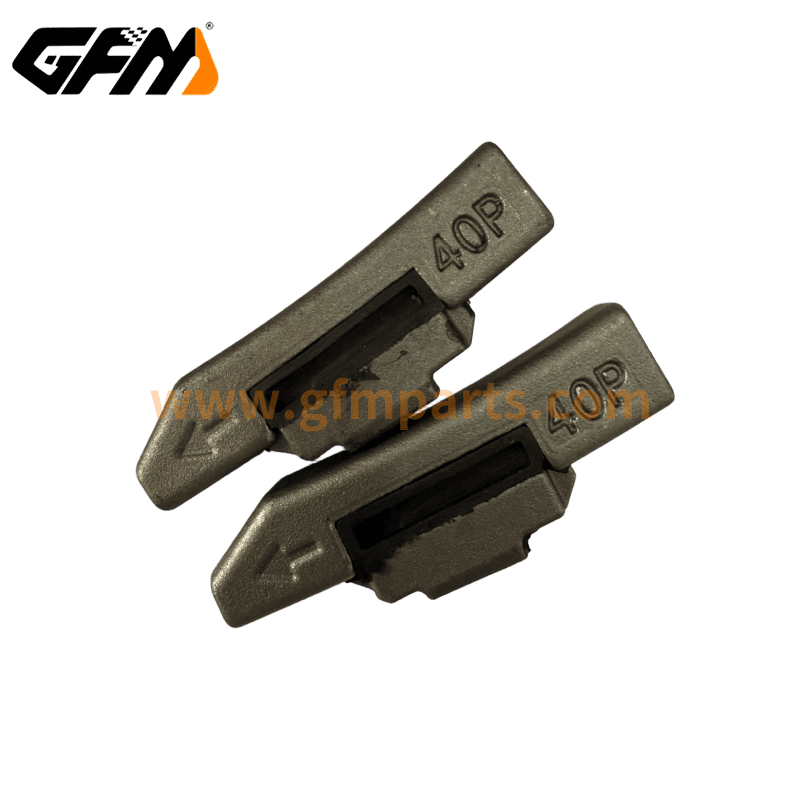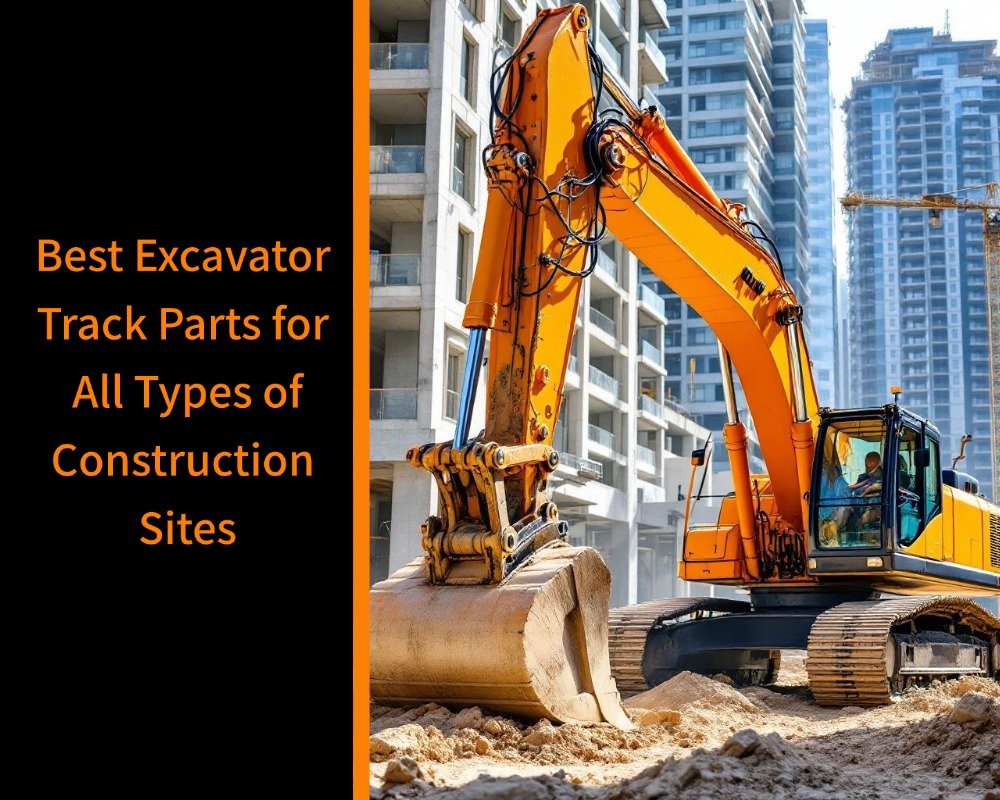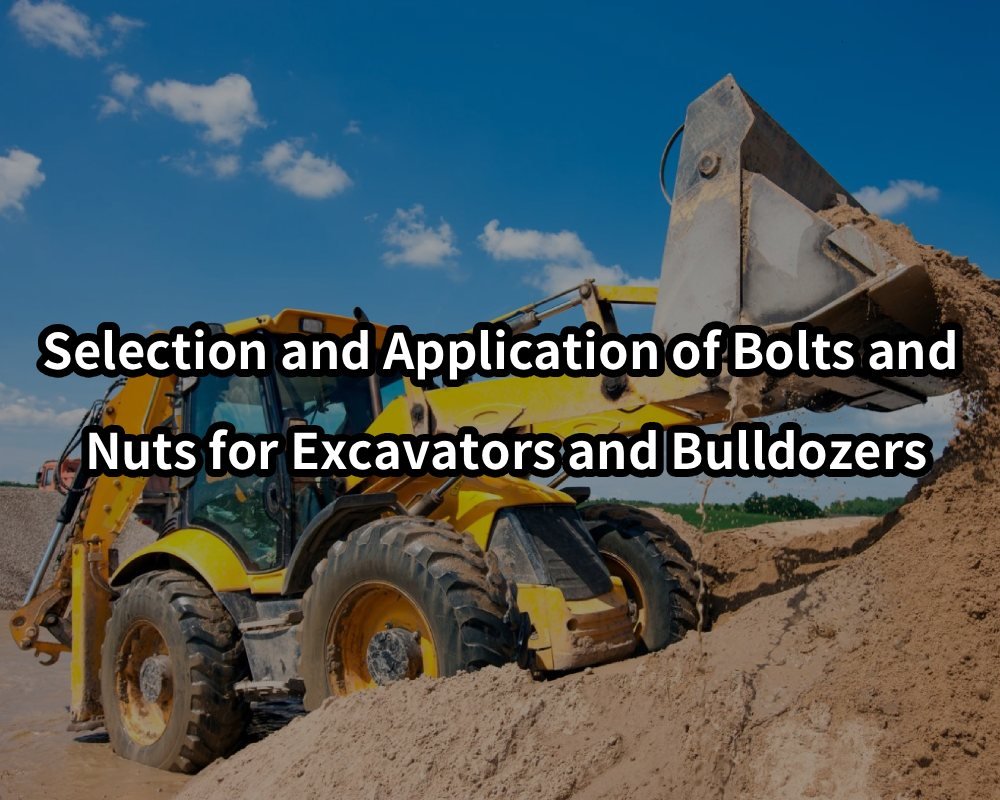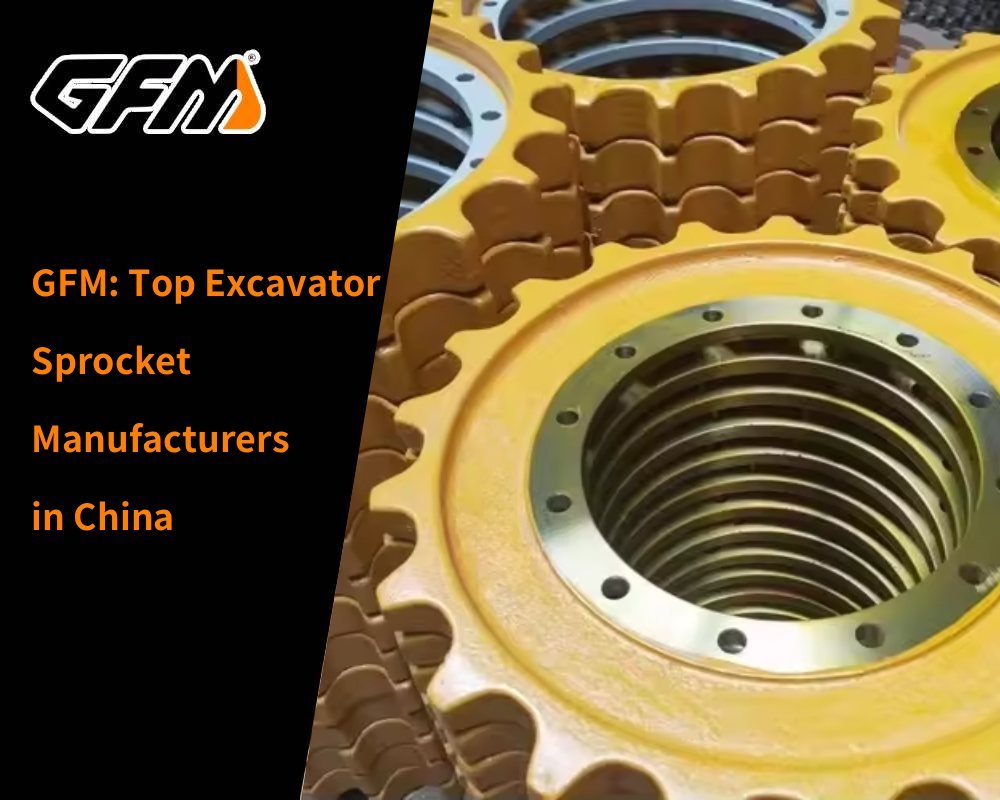In the field of construction machinery, the choice of excavator accessories directly affects the performance, service life and operating efficiency of the equipment. As a leading excavator parts manufacturer in the industry, GFM has witnessed countless customers’ frequent equipment failures and low efficiency due to improper selection of accessories.
Table of contents
- Basic knowledge of excavator accessories
- Key factors in selecting high-quality excavator parts
- Tips for purchasing different types of excavator accessories
- Excavator parts brand selection and price analysis
- How to properly maintain and service excavator accessories
- Avoid common misunderstandings in the purchase of excavator accessories
- Conclusion
Basic knowledge of excavator accessories
Before you start shopping for excavator accessories, you must first understand the basic knowledge of these parts. As an indispensable heavy machinery equipment on construction sites, excavators have a wide variety of accessories, including engines, hydraulic systems, travel systems, and working devices. The quality of these accessories directly affects the performance and service life of the excavator.
First, you need to be familiar with the model and specifications of your excavator. Different models of excavators may be equipped with different types of parts, so it is very important to make sure you fully understand the specific needs of your equipment before purchasing accessories. It is recommended to consult the official manual or consult professional technicians to obtain detailed information on the accessories suitable for your excavator model.
Common main accessories for excavators include: buckets, drill bits, wood grabs, hammers, hydraulic shears, vibratory hammers, track shoes and hydraulic cylinders. Each accessory has its specific functions and usage scenarios. For example, buckets are mainly used for earthwork excavation and loading operations, and can be divided into standard, reinforced and extended types according to different operating requirements; while hydraulic shears are specifically used for cutting metal materials, which can effectively solve the problems of cutting metal pipes and steel bars in construction projects.
Understanding these basic knowledge can help you be more targeted when purchasing and avoid waste and losses caused by improper selection. Remember, choosing the right accessories can not only improve work efficiency, but also extend the service life of the equipment, saving a lot of repair and replacement costs for the company.
Key factors in selecting high-quality excavator parts
When choosing high-quality excavator parts, there are several key factors that need special attention. These factors will directly determine the performance, durability and impact of the accessories on the overall working condition of the excavator.
First of all, material quality is the primary criterion for judging the quality of accessories. High-quality steel can not only improve the strength of the parts, but also significantly extend the service life. I recommend using a professional hardness tester to test the hardness and wear resistance of the material, which is a reliable way to evaluate the quality of the material. For example, for buckets that are often in contact with rocks or hard soil, products made of high-strength alloy steel should be selected to ensure that they still maintain good performance in harsh environments.
Secondly, size matching is crucial. Different models of excavators have different size requirements for accessories. Using mismatched accessories may cause equipment performance degradation or even damage. It is recommended to accurately measure or consult the original factory manual before purchasing to ensure that the selected accessories are fully compatible with your equipment. Using a digital vernier caliper for measurement can obtain more accurate data.
Manufacturing process is also an important factor affecting the quality of accessories. High-quality excavator accessories usually use advanced manufacturing processes such as precision casting, heat treatment and surface treatment. These processes can significantly improve the durability and reliability of accessories. For example, galvanized screws have excellent corrosion resistance and can maintain good working condition even in harsh working environments.
In addition, safety certification and quality assurance are also important references for selecting high-quality accessories. Accessories produced by regular manufacturers usually have relevant safety certifications and quality assurance periods. It is recommended to choose brand products that have obtained ISO9001 quality management system certification. Such products are more secure in quality control.
Finally, do not ignore user reviews and professional advice. Consult experienced operators or maintenance technicians to understand their experience and evaluation of accessories of different brands and models. These first-hand information is often more objective and practical than manufacturer propaganda.
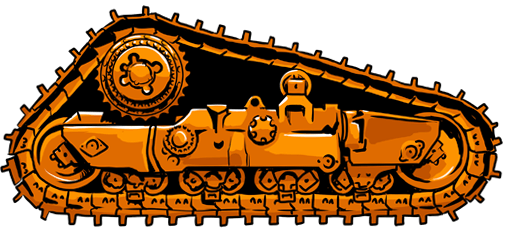
Tips for purchasing different types of excavator accessories
Different accessories for excavators have their own characteristics and purchase points. Below I will share some professional purchase tips to help you make wise choices for different types of accessories.
Purchase of hydraulic system accessories
The hydraulic system is the “heart” of the excavator, including key components such as oil pipe plugs and hydraulic cylinders. When choosing hydraulic system accessories, the material is the primary consideration. Common oil pipe plugs are made of aluminum alloy, stainless steel and carbon steel.
- Aluminum alloy is light and corrosion-resistant, suitable for long-term outdoor operations
- Stainless steel is durable and suitable for high-pressure environments
- Carbon steel is cost-effective and suitable for ordinary working conditions.
For hydraulic cylinders, attention should be paid to their pressure bearing capacity and sealing performance. It is recommended to choose products from well-known brands, and at the same time check the quality of the sealing ring and whether the installation is standardized. A good hydraulic cylinder should have no oil leakage, and the piston should move smoothly without stagnation. Our GFM test data shows that the service life of high-quality hydraulic cylinders under standard working conditions can reach more than 3,000 hours, which is much higher than the industry average.
Bucket and breaker selection
Buckets are one of the most commonly used accessories for excavators. When purchasing, you need to consider the working environment and materials. Standard buckets are suitable for general soft soils; reinforced buckets are suitable for hard soil or stone operations; and extended buckets are suitable for operations that require higher unloading heights and larger volumes. When checking the bucket, pay attention to the welding quality and the sharpness of the blade, which is directly related to the excavation efficiency.
The selection of breaker accessories such as cannon head screws is equally important. There are two common types: hexagonal and external threads. Hexagonal screws are widely used because of their convenient operation. When choosing, pay attention to the length of the screw (common specifications are 100mm and 135mm) and the material. Screws made of high-strength alloy steel have high tensile strength and are not easy to break. For owners who work frequently, I recommend choosing products with galvanized surfaces for better corrosion resistance.
Track and walking system accessories
Track plates are an important part of the excavator’s walking system, which directly affects the excavator’s walking and steering capabilities. According to different working occasions and road conditions, you can choose anti-slip, wear-resistant or all-steel tracks. When working on gravel ground, it is recommended to choose wide track shoes, which can reduce ground pressure and improve stability; when working on rocky ground, narrow track shoes are recommended to improve grip.
Regularly checking the tightness of the track is the key to maintaining the walking system. The professional practice is: lift the middle of the track, and the normal tightness should be between 2-3 cm. Too tight will increase the wear of parts, and too loose will affect walking performance and stability.
Electronic control system accessories
Modern excavators are increasingly relying on electronic control systems to improve efficiency. Cat’s operator guidance function is a good example. It can provide prompts to improve excavation efficiency and reduce hydraulic power consumption and fuel consumption. When purchasing electronic control system accessories, compatibility is the primary consideration. Make sure the selected accessories are fully compatible with your excavator model, and it is best to choose products from original or authorized manufacturers.
Electronic systems are also very sensitive to environmental conditions, so waterproof, dustproof and seismic resistance are also important reference indicators for selecting such accessories. Before purchasing, it is recommended to consult professional technicians to understand the applicability and installation requirements of the product.
Excavator parts brand selection and price analysis
In the excavator parts market, there are many brands and huge price differences. How to find the most cost-effective product among so many choices? Here are my professional suggestions to help you make a wise decision.
First of all, brand selection can be divided into three categories: original parts, OEM parts and aftermarket parts.
- Original parts are directly produced by excavator manufacturers, with reliable quality but higher prices
- OEM parts are produced by third-party manufacturers authorized by the original factory, with quality close to the original factory but relatively moderate prices
- Aftermarket parts are produced by independent manufacturers, with the most affordable prices, but uneven quality.
According to our GFM market research data, the market share of the top 5 excavator parts brands in the Chinese market in 2024 will be: Caterpillar (Cat) 22%, Komatsu 18%, Hitachi 15%, Doosan 12% and Liugong 10%. Although the products of these well-known brands are more expensive, their quality and after-sales service are guaranteed. For example, Cat’s operator guidance function can help operators of all experience levels to take their efficiency and productivity to a new level.
In terms of price, there are great differences between different parts. Take the oil pipe plug as an example. The 68-gauge oil pipe plug made of aluminum alloy is affordable and is the first choice of many machine owners. As for the cannon head screw, the 100mm hexagon socket cannon head screw is made of high-strength alloy steel. Although the price is higher than ordinary screws, it has high tensile strength and is not easy to break, which is more economical in the long run.
When choosing a brand and considering the price, I suggest adopting the “total cost of ownership” (TCO) thinking method, rather than just focusing on the initial purchase price. The calculation formula is: TCO = initial purchase price + installation cost + maintenance cost + downtime loss – residual value. Although the initial price of high-quality brand accessories is higher, their stability, durability and low maintenance rate can save users a lot of later expenses.
A small trick to save money is to look for “same source accessories”. Some excavators of different brands use parts from the same supplier, but the models are different. Knowing this information can help you find options with the same quality but better prices. Consulting professional maintenance technicians or joining excavator technical forums are good ways to obtain this kind of information.
Finally, don’t ignore after-sales service. Good after-sales service can solve problems with accessories in a timely manner, reduce downtime and reduce losses. Choosing a brand with a complete after-sales network and technical support is more cost-effective in the long run.
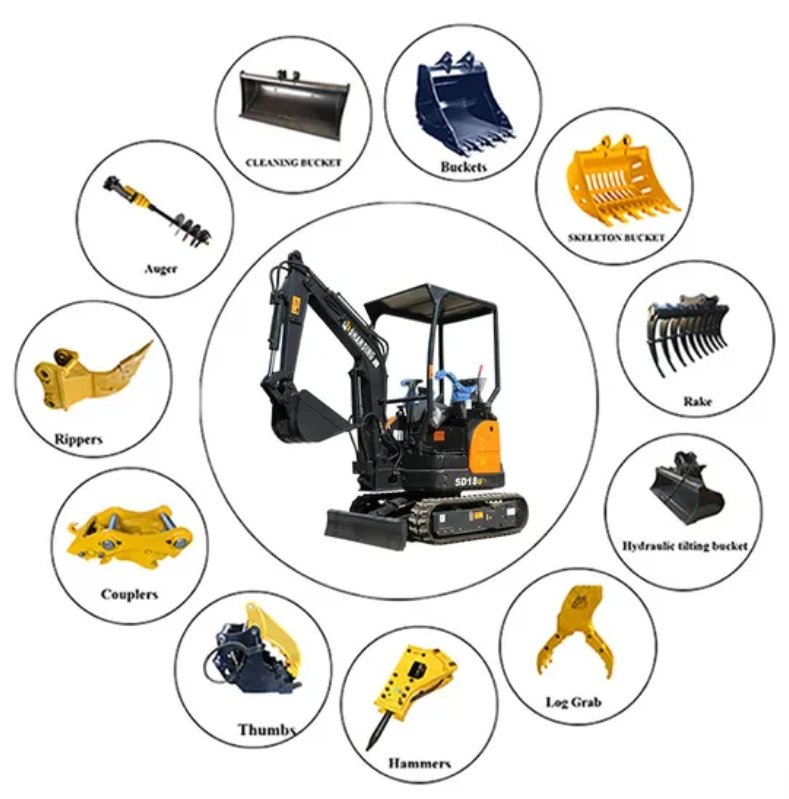
How to properly maintain and service excavator accessories
Even if you buy the best excavator accessories, their service life will be greatly reduced without proper maintenance and care. Here are some professional and easy-to-implement maintenance tips to help you extend the life of accessories and reduce operating costs.
More detailed maintenance guide: Click to view
Daily inspection and maintenance
A 10-minute routine inspection before work every day is the best way to prevent major problems. Focus on checking the hydraulic oil level, track tightness, bolt tightness of each connection, and whether there are leaks in the hydraulic pipeline. I recommend using a professional checklist app, such as “Equipment Doctor” or “Construction Machinery Assistant”, which can provide standardized inspection processes and recording functions.
Pay special attention to the cleanliness of the hydraulic system. According to statistics, 80% of hydraulic system failures are related to contamination. Therefore, it is crucial to replace the hydraulic filter element regularly. Generally, it is replaced after the first 50 hours of work and every 500 hours thereafter. Use the hydraulic oil recommended by the original manufacturer and avoid mixing different brands, which may cause chemical reactions that affect the performance of the oil.
Reasonable operating habits
Good operating habits can significantly extend the life of accessories. Using the tips provided by the operator guidance function, you can improve excavation efficiency, reduce hydraulic power consumption and fuel consumption, thereby maximizing operating efficiency. Avoid long-term idling, which not only wastes fuel but also causes carbon deposits in the engine. The correct approach is: if you need to stop for more than 10 minutes, you should turn off the engine.
Avoid excessive excavation and violent impact. When using a breaker, continuous operation should not exceed 30 seconds, and the equipment should be given a chance to “breathe”. When operating the excavator, the action should be smooth and avoid sudden acceleration or sudden braking, which can reduce the impact load of the hydraulic system and extend the service life of accessories.
Seasonal maintenance
Different seasons have different maintenance requirements for excavator accessories. In summer, the focus should be on preventing the engine from overheating and ensuring that the cooling system is clean and unobstructed; in winter, you need to pay attention to antifreeze measures and use engine oil and hydraulic oil of appropriate viscosity to prevent starting difficulties and slow response of the hydraulic system caused by low temperatures.
When operating in the rainy season, pay special attention to waterproofing and preventing electrical short circuits. After work every day, wipe off the moisture on the electrical components and spray waterproofing agent on the terminals. For equipment that has been parked for a long time, the engine should be started and all functions should be run for at least 30 minutes to prevent the seals from drying up and the system from rusting.
Regular professional maintenance
Although daily maintenance is important, regular professional maintenance is also indispensable. It is recommended to follow the following schedule:
- Every 250 hours: replace engine oil and filter
- Every 500 hours: replace hydraulic filter element and check transmission system
- Every 1000 hours: replace hydraulic oil, check hydraulic pump and motor
- Every 2000 hours: check engine valve clearance and replace coolant
Use professional maintenance record software to record each maintenance, which not only helps to track the condition of the equipment, but also provides a complete maintenance history when the equipment is transferred, and improves the second-hand value of the equipment.
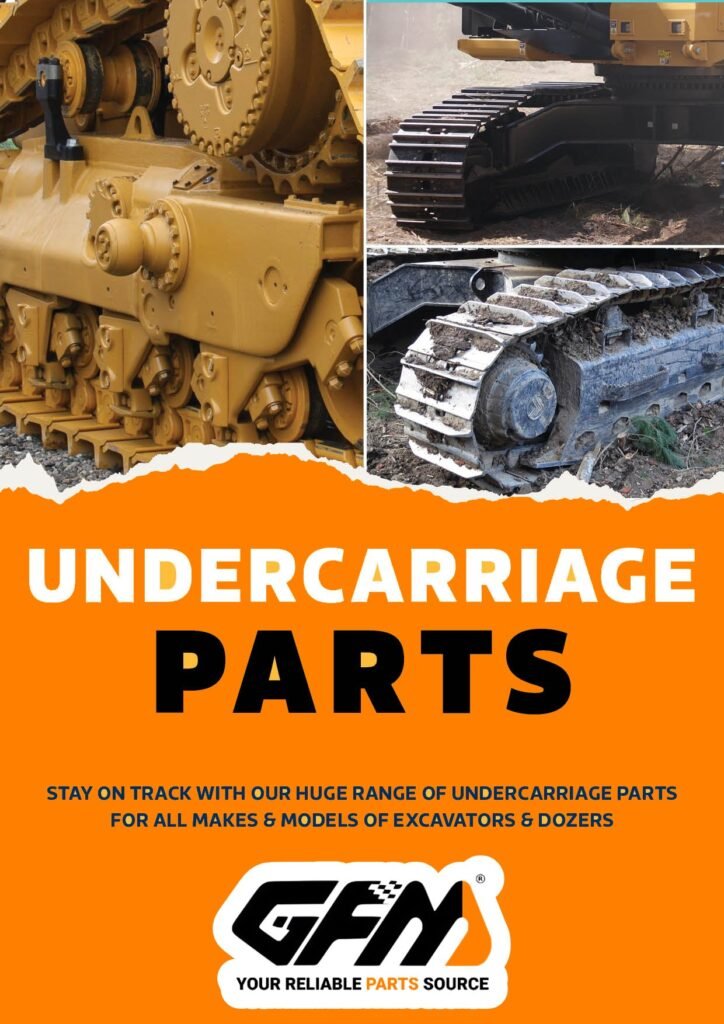
Avoid common misunderstandings in the purchase of excavator accessories
In many years of industry experience, I have found that many customers often fall into some misunderstandings when purchasing excavator accessories, resulting in unnecessary losses and troubles. Here are some common misunderstandings and how to avoid them, hoping to help you make more informed decisions.
Misunderstanding 1: Pursuing low prices blindly
The most common misunderstanding is to focus too much on price and ignore quality. Although cheaper parts have a lower initial investment, it may not actually be worth it considering the frequency of repairs, downtime, and replacement costs. For example, a low-quality hydraulic cylinder may be only one-third of the price of the original one, but its service life may be less than one-sixth, and the risk of failure is higher.
Solution: Adopt a total cost of ownership (TCO) mindset and comprehensively consider the initial price, service life, maintenance cost, and downtime loss of the parts. Create a simple Excel table to compare the long-term costs of different parts, which can more objectively evaluate the cost-effectiveness.
Misunderstanding 2: Ignoring compatibility
Many users ignore the compatibility with the original equipment when replacing parts, and purchase them based on the similar appearance alone. Different models of excavators have different requirements for the boom, mid-arm, and other components. Mismatched parts may lead to performance degradation and even safety accidents.
Solution: Before purchasing, read the equipment manual in detail or consult professional technicians to ensure that the accessories are fully compatible with the excavator model. Use the accessory number query system provided by the manufacturer to ensure that the correct accessories are selected. You can also use professional accessory matching apps, such as “Mechanical Accessories Assistant”, to quickly find matching accessories by scanning the equipment nameplate.
Misunderstanding 3: Blindly following brands
Some users blindly follow well-known brands, thinking that high prices must equal high quality. Although well-known brands usually have quality assurance, many small and medium-sized brands also provide products with reliable quality and more cost-effective.
Solution: Don’t just look at the brand, but pay attention to the specific parameters, materials and processes of the product. Refer to real user reviews, especially those with detailed descriptions of the use experience. Try to get information from different channels, such as professional forums, industry exhibitions and recommendations from maintenance technicians.
Misunderstanding 4: Ignoring after-sales service
Many buyers only focus on the product itself and ignore the importance of after-sales service. When there is a problem with the accessories, good after-sales service can quickly solve the problem and reduce downtime and losses.
Solution: Choose a supplier that provides comprehensive after-sales support, including technical consultation, installation guidance and maintenance services. Clarify the warranty policy and return and exchange terms before purchasing. Establishing long-term cooperative relationships with suppliers usually results in better service and price discounts.
Misunderstanding 5: Lack of maintenance awareness
Even if you buy the best quality parts, without proper maintenance and care, their service life will be greatly shortened. Many users ignore the importance of daily maintenance and only think of repairs when a fault occurs.
Solution: Develop and strictly implement a daily maintenance plan. Use the tips provided by the operator guidance function to improve work efficiency while reducing equipment wear. Regularly conduct professional inspections to find potential problems and deal with them in time to prevent them from happening.
| Get a quick free quote | Email: henry@gfmparts.com | Whatsapp: +86 17705953659 |
Conclusion
Choosing the right excavator parts is a job that requires professional knowledge and experience. By understanding the basics, mastering shopping skills, choosing the right brand, properly maintaining and servicing, and avoiding common misunderstandings, you can equip your excavator with the best quality parts, improve work efficiency, extend the life of the equipment, and ultimately reduce overall operating costs.
Remember, the best parts are not necessarily the most expensive, but the most suitable for your specific needs. I hope that the suggestions in this article can help you find the real “treasure” in the ocean of excavator parts, keep your equipment in the best condition at all times, and create greater value for you.
If you have any questions about the selection of excavator parts, please feel free to consult our professional team. We at GFM excavator undercarriage parts manufacturer will wholeheartedly provide you with the most professional advice and the best quality products.
